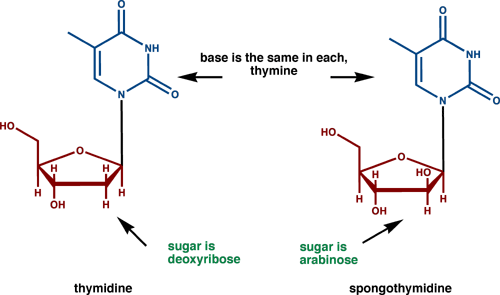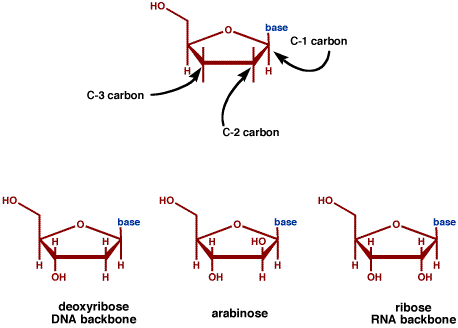Chemistry lesson: thymidine and spongothymidine
The figure below shows the structures of thymidine and spongothymidine:

Both molecules are termed nucleosides. The blue portion of each molecule is the base moiety, and the reddish portion of each molecule is the sugar moiety. Together the base and sugar make up the nucleoside. The base (blue) moiety of each is thymine, but the sugars (reddish) differ slightly. The sugar of thymidine is deoxyribose, and the sugar of spongothymidine is arabinose.
The difference between the two sugars (and thus the two molecules) is the -OH (hydroxyl) group at the C-2 carbon position. The figure below illustrates the difference between three sugars: deoxyribose, arabinose, and ribose.

Deoxyribose sugars (plus base) form the backbone of DNA, and ribose sugars (plus base) form the backbone of RNA. Not only is the spongo sugar, arabinose, unlike deoxyribose, it is unlike ribose. Instead of going "down" as in ribose, it goes "up" in arabinose. This makes all the difference between arabinose and ribose. So not only are arabinose-base nucleosides unnatural DNA building blocks, they are also unnatural RNA building blocks.
The sponges contained arabinose sugars attached to a base but the function of these compounds was not known. Recall that Bergmann's discoveries are happening in the middle of the twentieth century. A historical perspective is in order - on to the next section.